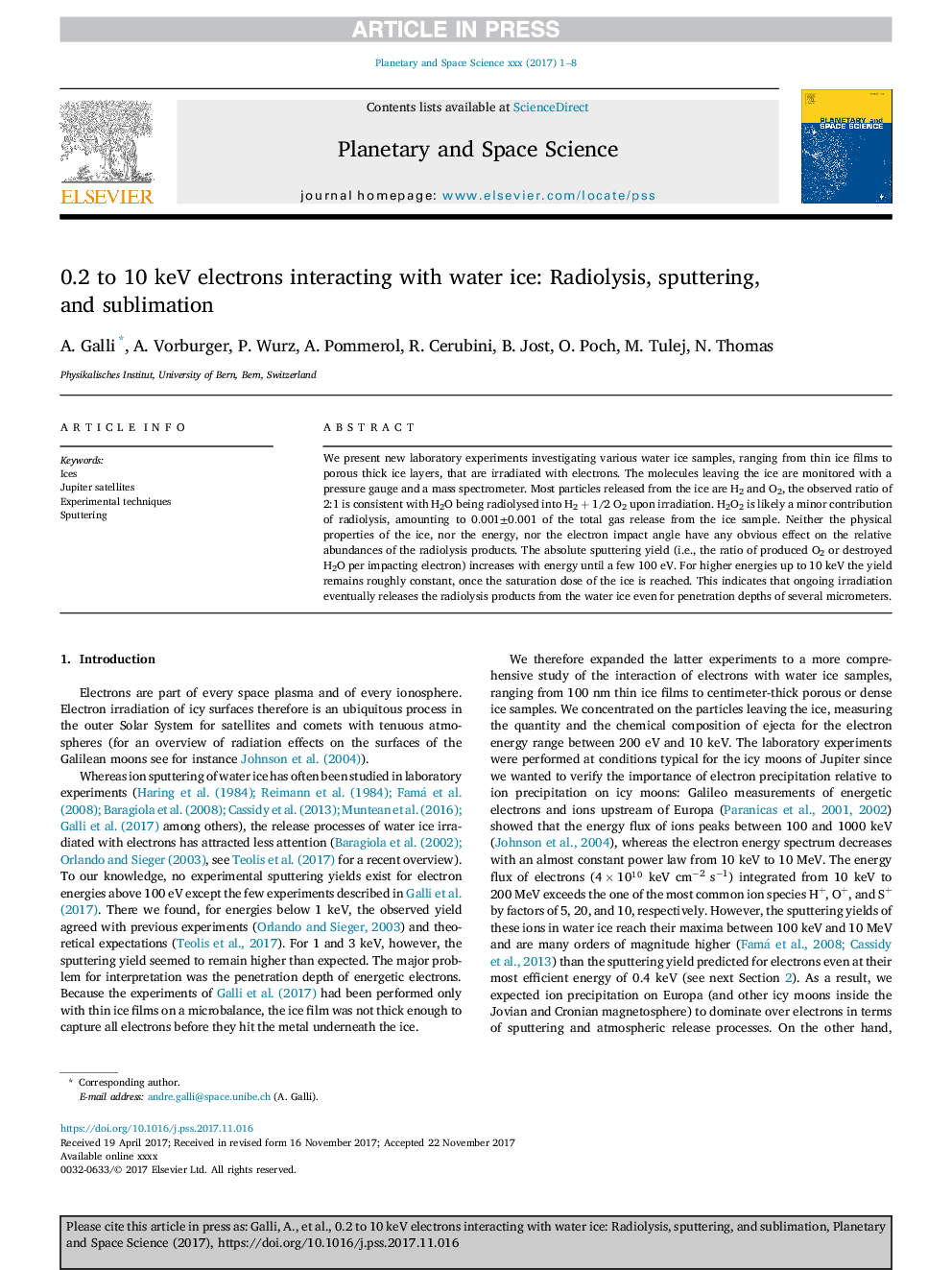| Article ID | Journal | Published Year | Pages | File Type |
|---|---|---|---|---|
| 8142248 | Planetary and Space Science | 2018 | 8 Pages |
Abstract
We present new laboratory experiments investigating various water ice samples, ranging from thin ice films to porous thick ice layers, that are irradiated with electrons. The molecules leaving the ice are monitored with a pressure gauge and a mass spectrometer. Most particles released from the ice are H2 and O2, the observed ratio of 2:1 is consistent with H2O being radiolysed into H2 + 1/2 O2 upon irradiation. H2O2 is likely a minor contribution of radiolysis, amounting to 0.001±0.001 of the total gas release from the ice sample. Neither the physical properties of the ice, nor the energy, nor the electron impact angle have any obvious effect on the relative abundances of the radiolysis products. The absolute sputtering yield (i.e., the ratio of produced O2 or destroyed H2O per impacting electron) increases with energy until a few 100 eV. For higher energies up to 10 keV the yield remains roughly constant, once the saturation dose of the ice is reached. This indicates that ongoing irradiation eventually releases the radiolysis products from the water ice even for penetration depths of several micrometers.
Related Topics
Physical Sciences and Engineering
Earth and Planetary Sciences
Geophysics
Authors
A. Galli, A. Vorburger, P. Wurz, A. Pommerol, R. Cerubini, B. Jost, O. Poch, M. Tulej, N. Thomas,
